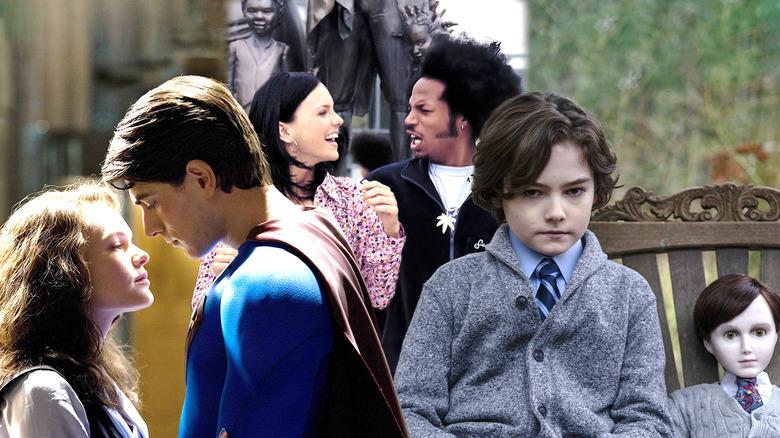
Though moviegoers and filmmakers alike may sometimes think of Hollywood as a purveyor of art and entertainment, the industry is, above all, a business. This means that the bottom line is of the utmost importance to studio executives, which, unfortunately, sometimes leads to decisions that don't produce a favorable outcome for viewers. Case in point: movie sequels. When a film is a hit, producers start itching to replicate its success, and sequels are seen as the best way to do that. However, not all follow-ups are made equal, and things sometimes get left behind in the rush to generate another box office smash.
Strict continuity isn't necessarily the most vital element in making a great sequel, but a little cohesion doesn't hurt. The examples we've compiled below are sequels that completely ignore the previous installment(s) in the series, much to the consternation of dedicated fans. In some cases, re-writing the ending of a previous entry can lead to positive results, especially if the previous film was a major detour in the franchise. In other instances, this lack of continuity totally ruins the series as a whole. There's also at least one movie on this list where disregard for canon is part of the gag itself. What follows are some of the most glaring examples of this rather puzzling Hollywood practice.
Evil Dead II
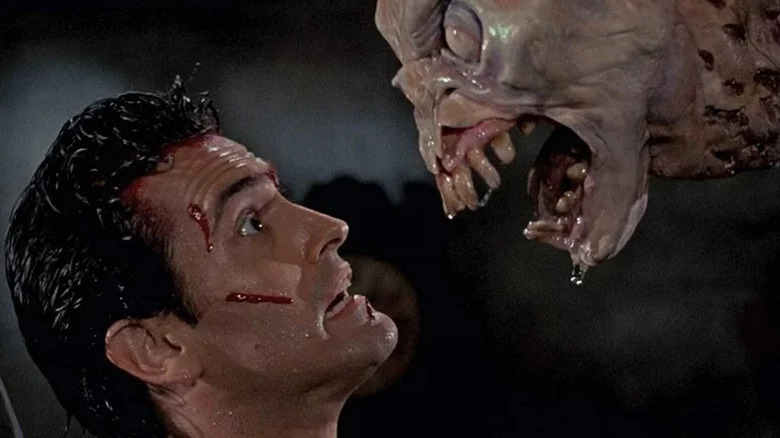
Sam Raimi's 1981 film "The Evil Dead" is a low-budget, independent project that had unprecedented success following Stephen King's vocal appreciation. Raimi was keen on making a sequel, but things didn't go as planned. His original idea was to have the main character, Ash Williams (Bruce Campbell), travel to the Middle Ages through a portal. Raimi struggled to get the ball rolling until his buddy King convinced producer Dino de Laurentiis to get on board.
De Laurentiis wasn't into Raimi's time-travel idea (though this would become the plot for the third installment), so Raimi was advised to stay closer to the original. Raimi didn't actually own the rights to the first movie, however, so he couldn't re-use any footage to tie the two together. His solution? To essentially remake the first film with a (mostly) different cast. Campbell returned for the role of Ash, but the actress who initially played his girlfriend Linda, Betsy Baker, wasn't available at the time.
The beginning of "Evil Dead II" sees Ash returning to the cabin where the horrifying events of the first entry happened with a new girlfriend in tow. He seems to have no memory of the previous events, and he and Linda (Denise Bixler) once again accidentally resurrect a demon and Linda gets turned into a Deadite. This confusion begs the question of if this is a sequel or a remake, a debate that has raged on for decades. Bruce Campbell's answer? It's actually a requel.
The Descent Part 2
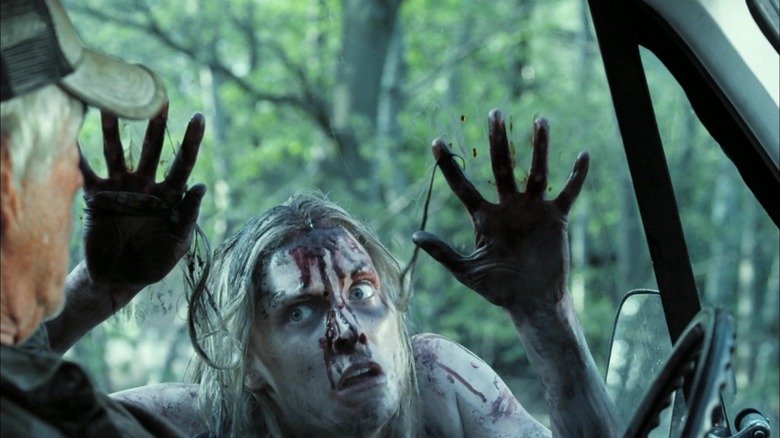
"The Descent" is one of the great (and under-appreciated) horror films of the 2000s, so it's a shame the sequel pales in comparison. The original is totally harrowing, and the ending doesn't offer much hope -- though it all depends on which cut you watch. According to Vulture, the original version had Sarah (Shauna Macdonald) stab her faithless friend Juno (Natalie Mendoza) before finally escaping to her car. But then, in a devastating blow, it's revealed Sarah never left the cave at all, and is still down there, hallucinating her dead daughter. Lionsgate thought this ending was a little too bleak, however, and the ending was changed to indicate that Sarah did in fact get out.
And then came the sequel, which is generally disavowed by fans of the first film. "The Descent Part 2" takes place shortly after the events of "The Descent" and sees Sarah finally escaping the cave -- which she either already did in the U.S. version, or very clearly did not do in the U.K. version. When she reaches civilization, it's revealed that she's lost all memory of what has happened, even though she hallucinated Juno in the car at the end of the first movie. And, about Juno, the woman she stabbed and left for dead? She's still alive, actually, and Sarah is somehow convinced to go back down into the caves. It makes little sense continuity-wise, and it also pointedly overlooks the psychological damage Sarah experienced in the original.
Scary Movie 2
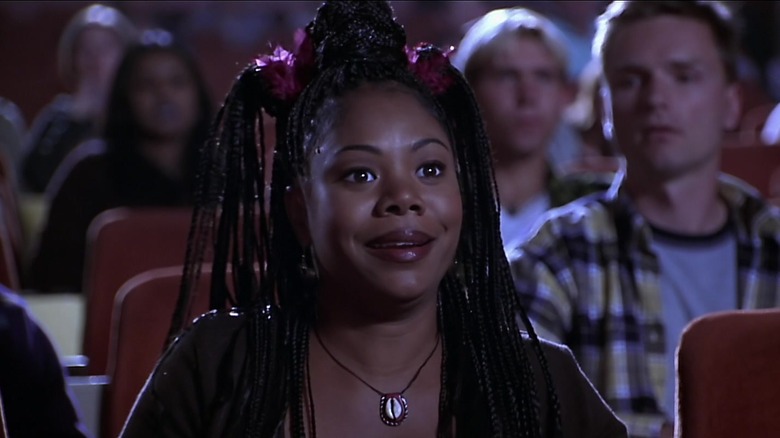
The "Scary Movie" series is one of the few examples where canonical inconsistencies are actually a welcome part of the story. The franchise is essentially one big horror movie parody, poking fun at films like "Scream" and "The Ring." One of the most beloved "Scary Movie" characters is Brenda Meeks, played by national treasure Regina King. Brenda is hilariously annoying, and this trait winds up getting her killed -- more than once, actually.
Brenda meets her first demise in the original film while attending a screening of "Shakespeare In Love." The other patrons at the movie theater don't take kindly to Brenda's constant yapping, and they silence her once and for all by stabbing her repeatedly. She dies by dramatically collapsing in front of the screen just like Jada Pinkett Smith's character in "Scream 2" (which was itself a parody of horror movie tropes wherein Black characters always die first).
Thankfully for us, "Scary Movie 2" completely ignores the events of its predecessor, and Brenda is once again alive and well. She makes it through relatively unscathed, but then dies once more in "Scary Movie 3" when she's killed by Tabitha (Marny Eng), who looks a lot like Sadako from "The Ring." Even though her casket is accidentally blown up at her funeral, Brenda returns for "Scary Movie 4," where she survives -- except for in a deleted scene where she's slain a final time.
Highlander II: The Quickening
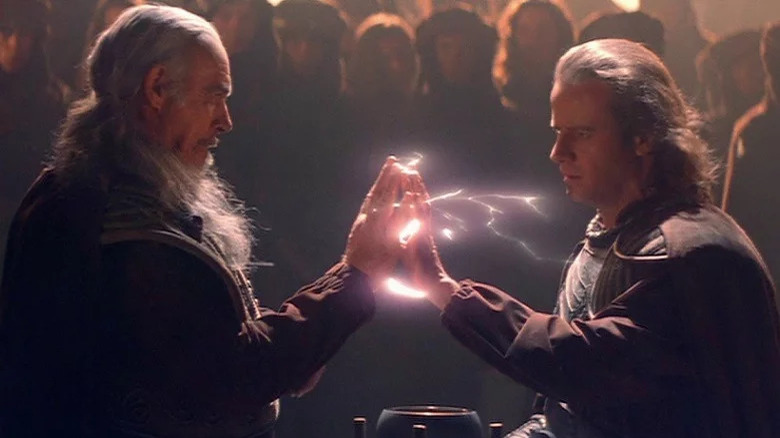
The plot of the first "Highlander" is already preposterous enough. Christopher Lambert plays Connor MacLeod, a 16th-century man born in the Scottish Highlands. He's revived after being killed in battle and learns he's part of a group of immortals who are invincible unless they are beheaded. Connor is told of a secret war that the immortals have fought for centuries. Those that survive will gather to battle for a mysterious reward known as the Prize. The Gathering finally occurs in New York City in 1985, and Connor defeats his enemies and finally discovers what the Prize is -- the gift of mortality.
The end of the first film is pretty conclusive -- there are no more immortals left in the world and Connor finally gets to settle down and have a family -- but that didn't stop producers from making a sequel. "Highlander II: The Quickening" completely upends the events of the first installment, and as such is one of the most hated sequels of all time. Here's what goes down: We quickly learn that the immortals were never actually immortals, but instead aliens. Sean Connery's character, Ramirez (who is Egyptian, but has a Spanish name and a Scottish accent, by the way), can resurrect himself, which means he's immortal again. Also, the Prize is no longer the gift of immortality, but rather a choice between dying very slowly or very quickly. And, perhaps most importantly, none of the characters -- including the titular Highlander himself – are actually Scottish, which really just defeats the entire premise.
Species II
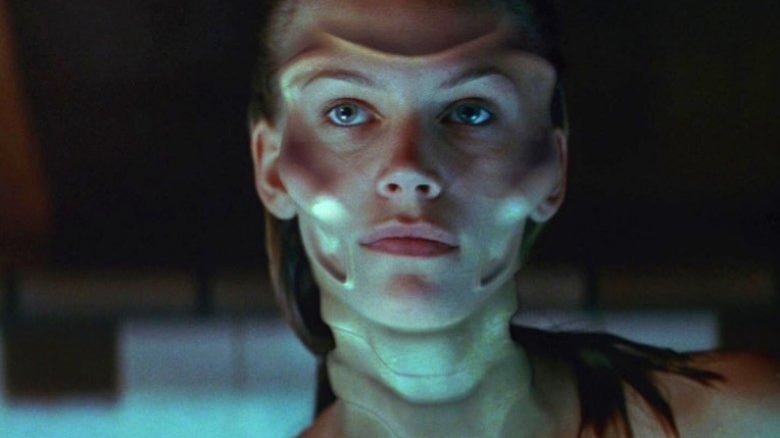
1995's "Species" is a mostly forgotten sci-fi horror film that treads familiar territory. The movie follows a group of scientists who have created an alien-slash-human hybrid, only to belatedly realize the danger it poses to society. The hybrid in question, Sil (Dana Hee), looks like a normal human and is intent on mating with men in order to produce offspring and take over the planet. Much of the film centers on how dangerous human sexuality can be, until its curveball ending. Though Sil has been defeated, in the final scene we see a rat chewing on her dead body and then mutating and devouring others of its kind.
This is an interesting direction, especially because it diverts our attention away from sex as the primary threat. Unfortunately, the sequel, released in 1998, doesn't take the bait. "Species II" reiterates the focus of the first installment, except this time it's a male alien who's trying to impregnate human women. But whatever happened to those rats? And what about the implications that alien DNA could genetically mutate other animals and potentially disrupt Earth's entire food chain? Sex sells, as the saying goes, so these compelling questions sadly remain unanswered.
Brahms: The Boy II
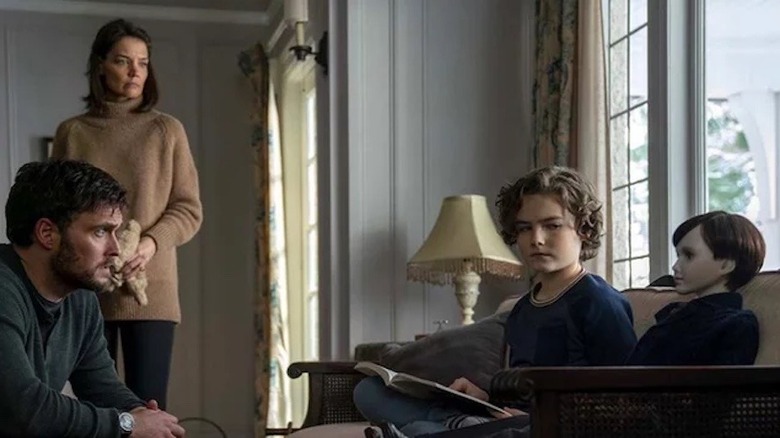
"The Boy" is a 2016 film that comes from a long line of possessed doll movies. Lauren Cohan plays Greta, a young woman hired as a nanny for a doll named Brahms. Her employers write out strict rules for her to follow, which she initially ignores until strange things begin happening around the house. She eventually comes to believe the doll is actually possessed, perhaps the most likely explanation for the events she experiences. The twist ending upends this notion, however, as we learn that Brahms' namesake is actually an adult man who was presumed to have died as a child, but has been living in the house all along, meaning the doll isn't actually possessed.
"The Boy" may be a possessed doll fake-out, but its sequel, "Brahms: The Boy II," reneges on the conclusion of its predecessor. At the end of "The Boy," Brahms the doll is smashed into pieces, only for someone to begin putting him back together in the final frame. In the second film, a young boy named Jude (Christopher Convery) moves into the house and becomes attached to the doll. The human Brahms is most certainly dead, but now the doll is truly possessed and Jude has to follow the same rules that Greta did. This sequence of events makes little sense, and it's no wonder the sequel was even more poorly received than the first movie.
I Still Know What You Did Last Summer
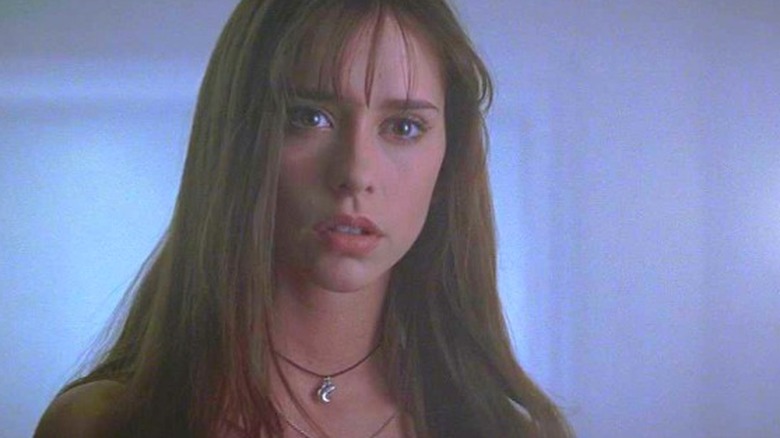
1997's "I Know What You Did Last Summer" is a classic example of silly slasher fun. It follows four high school friends -- Helen (Sarah Michelle Gellar), Ray (Freddie Prinze Jr.), Julie (Jennifer Love Hewitt), and Barry (Ryan Phillippe) -- who hit a man with their car and then try to cover up the evidence. They think they've gotten away with it until a mysterious man with a hook begins picking them off one by one. He doesn't get all of them, however, as the first film concludes with Juile and Ray still alive -- well, hopefully. At the end of the movie, Julie is attending college a year later and is accosted by someone who breaks through the shower door.
This is not necessarily an indication that Julie dies, but it's clear her attacker has returned. In the sequel -- which is probably better than you remember and also features both Jack Black and Brandy -- Julie's harrowing encounter with the mystery man is ignored completely. We find her once again at college, where she appears to be re-adjusting fairly well to normal life and makes no mention of ever being attacked in the shower. She even plans a trip with her best friend to the Bahamas, which doesn't end up working too well for her. But what "I Still Know What You Did Last Summer" lacks in continuity, it makes up for in Love Hewitt's absolute banger of a pop song that plays during the credits.
Superman Returns
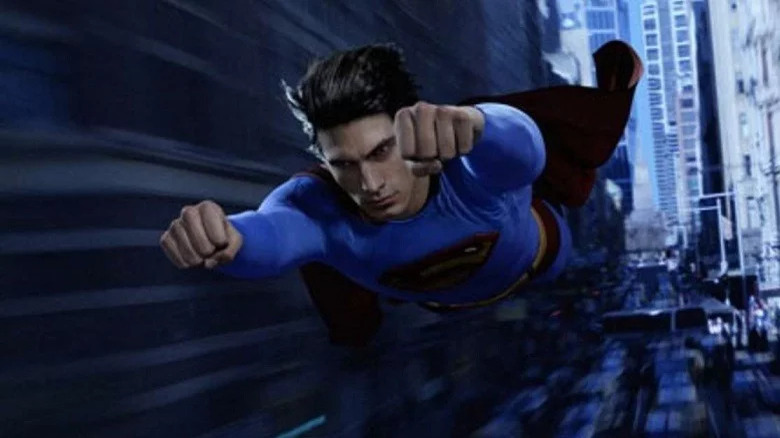
The Christopher Reeve "Superman" series, which first began in 1978, is one of the earliest examples of a superhero movie franchise, at least as far as DC and Marvel properties go. The original installment was critically and commercially successful, as was the second film, though slightly less so. Things took a turn for the worse with the third and fourth entries, "Superman III" and "Superman IV: The Quest for Peace," respectively. In fact, they were so poorly received that efforts have since been taken to erase them from the timeline altogether.
The 2006 film "Superman Returns" aimed to be a sequel to "Superman II," but ignore the third and fourth installments entirely. At the end of "Superman II," our titular hero flies into space. In "III" and "IV," Superman is safely back on Earth, though "Superman Returns" acts as if that never happened. It stars Brandon Routh as Superman and takes place five years after the events of "Superman II" as Clark Kent returns to Earth and finds that much has changed since he's been gone.
"Superman Returns" also effectively rejects the existence of Supergirl, as the 1984 work of the same name is technically part of the canon between "Superman III" and "Superman IV." Luckily, Helen Slater, the original Supergirl, got a chance to rejoin the universe by playing Supergirl's mom in The CW series.
Halloween H20 And Halloween (2018)
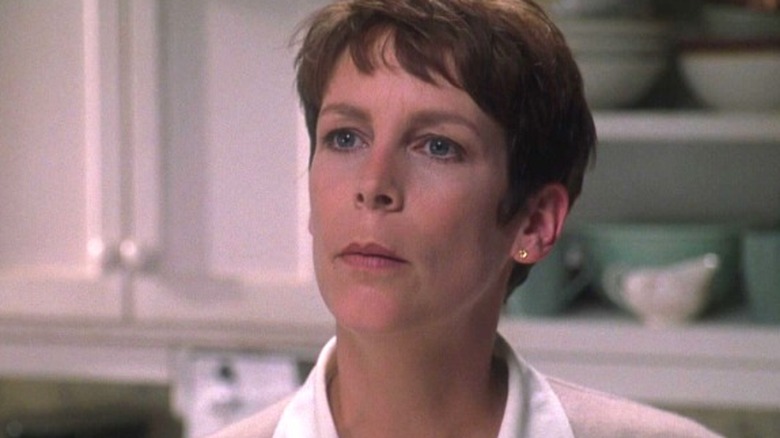
Horror movie franchises tend to have famously confusing timelines, and "Halloween" is one of the most confusing of them all. John Carpenter's 1978 original is one of the most beloved slasher films of all time, but things start to get a little wonky after that. "Halloween II" is a direct follow-up and has Laurie Strode (Jamie Lee Curtis) face down Michael Meyers once more, while "Halloween III: Season of the Witch" is an unrelated sequel and a meta-commentary on the series itself. The following entries, "Halloween 4: The Return of Michael Myers" (1988), "Halloween 5: The Revenge of Michael Myers" (1989), and "Halloween 6: The Curse of Michael Myers" (1995), were not especially well-received and also killed off Laurie Strode.
Flash-forward to "Halloween H20: 20 Years Later," which resurrects Laurie (she apparently faked her death), but otherwise ignores movies three through six, most notably omitting the existence of Laurie's daughter, Jamie. The film was relatively successful at the box office, leading to another sequel, "Halloween: Resurrection," in 2002. The series was then rebooted once again in 2007 when Rob Zombie threw his hat into the ring with two movies.
To make things even more complicated, 2018's "Halloween" -- and its sequels "Halloween Kills" and "Halloween Ends" -- omit the events of every previous movie apart from the original. This means that Laurie and Michael are not siblings in this timeline, a revelation that was discovered in "Halloween II." "Halloween Kills" brings the series to a pretty conclusive end, but who knows how long it will be until we get another reboot.
The Exorcist III
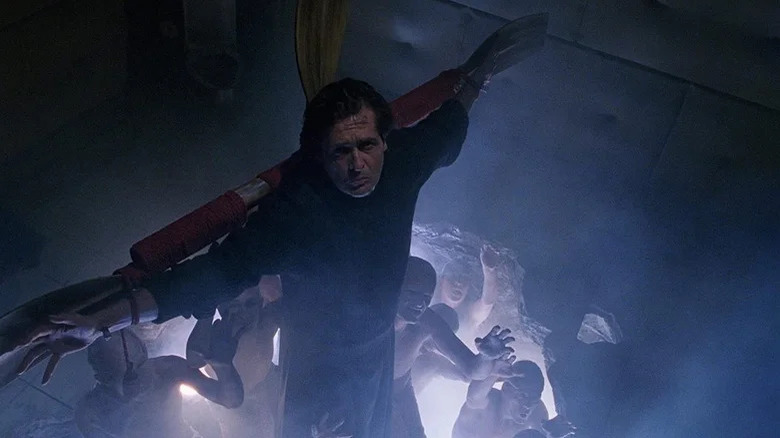
"The Exorcist" is an incredibly influential and terrifying film -- it was banned for over a decade in the U.K. -- and its sequel is an abject failure in comparison. "Exorcist II: The Heretic" delivers none of the frights of its predecessor, and instead comes off more like a slapstick comedy. When it came time for another installment, the events of "Exorcist II" were ignored entirely. In fact, the third "Exorcist" film wasn't meant to be a direct sequel. Author William Peter Blatty titled his follow-up novel "Legion" and intended for the movie adaptation to be released under that title. The studio wasn't satisfied with the name, however, and had it retitled "The Exorcist III" to emphasize the connection to the original.
This renewed branding meant several changes were made to the film itself, including a totally new ending, and of course, an exorcism scene. Though the third (or second?) entry in the franchise wasn't especially well-received at the time, it has since gained something of a cult following, with many fans attentive to the fact that Blatty's original vision was completely transformed by the studio. The director's cut has since been made available on Blu-ray, so viewers can now compare Blatty's version to what the studio came up with. The final theatrical cut is a pretty entertaining thriller on its own, though it's ultimately brought down by comparisons to the original.
Jaws: The Revenge
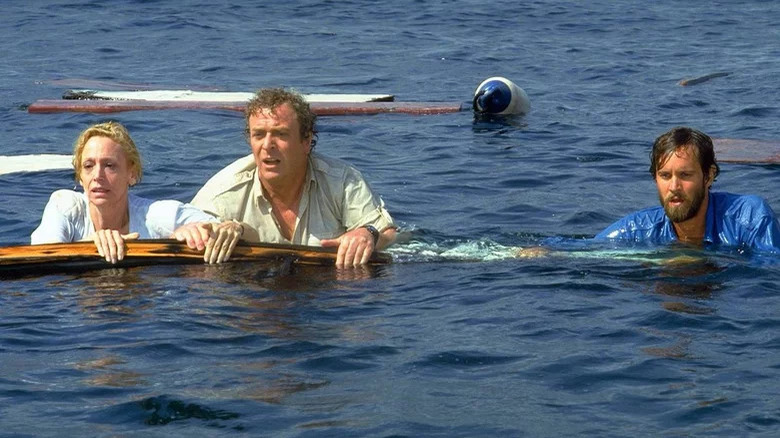
Steven Spielberg's "Jaws" is often considered a horror masterpiece and is credited as one of the first summer blockbusters. Unfortunately, the three sequels are frequently hailed as some of the worst follow-ups ever made. The second installment, "Jaws 2," is just fine, while the third, "Jaws 3-D," released during a period where third entries in a series were released in 3-D as a gimmick, was much, much worse. The movie stars Dennis Quaid as Mike Brody, the son of Chief Brody (Roy Scheider), an engineer who works at Seaworld. Mike is dating marine biologist Kathryn (Bess Armstrong) and has a younger brother, Sean (John Putch).
"Jaws 3-D" was received poorly by critics, and the next one in the series ignores it entirely. "Jaws: The Revenge," also focuses on the Brody brothers, but they are essentially different characters. Mike is now a marine scientist played by Lance Guest, and he has a wife, Carla (Karen Young), and a daughter. Sean (now played by Mitchell Anderson) is a police deputy who is killed by a great white at the start of the film. Mike convinces his mother, Ellen (Lorraine Gary), to come back to the Bahamas with him and his family after Sean's funeral, and thus the bloody events continue.
The decision to forget "Jaws 3-D" didn't turn out too well, however, as "Jaws: The Revenge" was universally panned. The fourth film in the series effectively nuked the franchise, which really shouldn't have gone on past the original masterpiece.
I Am Legend
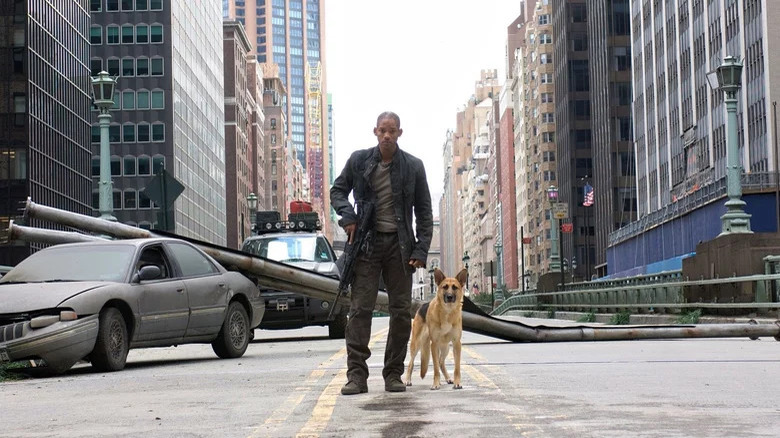
The Will Smith-starring "I Am Legend" is a classic post-apocalyptic film, but its ending has long been debated. The movie is based on Richard Matheson's book of the same name, which has a far bleaker finale than Hollywood could handle at the time. In the novel, the Darkseers (aka the infected vampires) look just like humans, and Dr. Neville (Smith) has a relationship with one of them. This Darkseer turns out to be a spy who was sent to investigate him because of how many Darkseers he has killed and experimented on over the years. Dr. Neville realizes that, according to them, he is the monster meant to be feared.
The original ending that was filmed is closer to the novel, with Neville realizing that he has become a monster, but managing to escape with Anna (Alice Braga) and Ethan (Charlie Tahan). This didn't test well with audiences, so it was reworked to show Neville sacrificing himself to protect the cure and thus eliding this revelation about his own monstrous behavior.
It's now been announced that there will be a sequel to "I Am Legend," and this follow-up will ignore the original ending and instead go with the alternate version. Taking place decades later, the Darkseers have maintained their own society, and mother nature has continued taking over the planet. Writer Akiva Goldsman likened the world of the film to "The Last of Us," wherein humans are longer in control of Earth.
Read this next: 14 Sequels That Truly Didn't Need To Happen
The post Sequels that ignored the previous movie's ending appeared first on /Film.
0 Comments